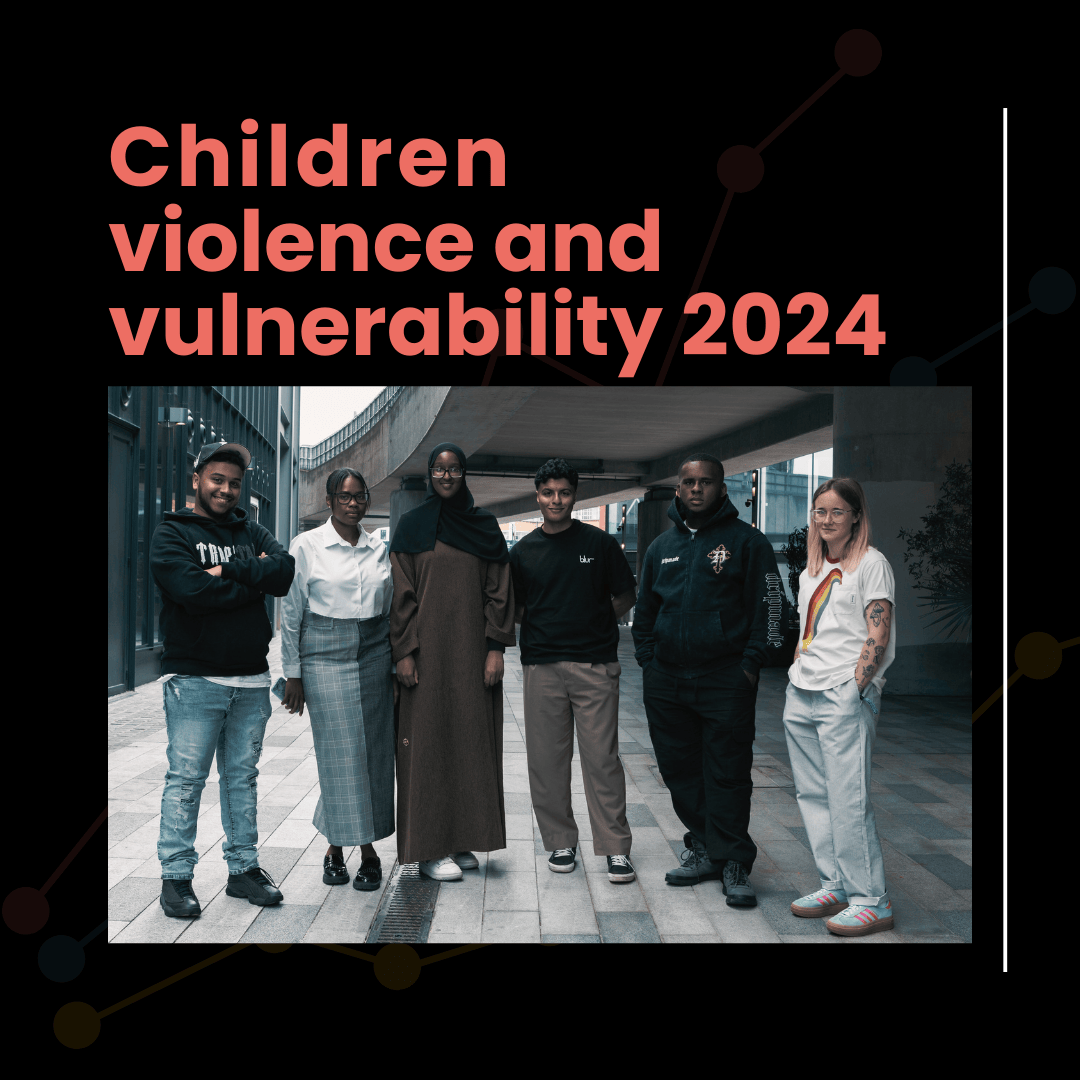The start of 2025 has seen fatal stabbings of young people making headlines across the country. Every child’s life lost is devastating to families and communities. While it’s easy to feel overwhelmed by the scale of the problem, it’s crucial to remember that there are concrete actions we can take to address this crisis; and at the Youth Endowment Fund, we believe there is work we can do to stop knife crime.
Knife crime is a serious issue for young people.
Young people are telling us that knife crime is a real concern for them, and their fears are understandable. Our recently published children, violence and vulnerability report shows that 1 in 20 teenage children in England and Wales report having used a weapon to threaten or hurt someone in the past year. Over 2% (equivalent to 86,667 13-17-year-olds nationally) say they’ve carried a knife. We also know that half (52%) of all teenage children report changes to their daily life out of concerns for their safety, with a small but worrying proportion (9%) saying they’ve joined a gang or carried a weapon to protect themselves.
One of the government’s key promises is to address this problem and halve knife crime over the next decade. But to do this, we need to understand the full extent of the problem and the most effective strategies for reducing violence among young people. So where do we stand?
All measures point to a rise in knife crime in the latest year.
The most common way to track knife crime uses the number of crimes recorded by the police that have involved a knife or sharp instrument. This measure has shown – apart from the year of the Covid pandemic (2020/21) – increases in knife-enabled crimes every year for the past decade. The latest full year for which data is available (2023/24) was no exception, showing an increase of 4%, to over 50,000 recorded knife-enabled crimes.1
The difficulty is that different measures of knife crime often tell different stories. While the number of crimes involving knives recorded by the police has consistently risen, hospitalisations due to knife assault have shown broadly the opposite pattern. The number of children admitted to hospital following knife assault in particular has been falling since 2018/19.
However, for the first time since Covid, the two measures are in agreement, and they paint a concerning picture; knife crime is getting worse. The latest year (2023/24) saw a rise in the number of children admitted to hospital for knife assault, up 9% on the previous year. There was also an alarming increase in knife-related homicides. Forty children lost their lives to a knife or sharp instrument, 17 of whom were aged 15 or younger.
Children have been particularly affected.
Hospital admissions data tell us that children are the most affected by rises in knife crime. Overall, knife-related hospital admissions have shown a similar pattern for all ages over the past decade: levels increased in the mid-2010s, started falling prior to Covid, and have been on a broadly downward trend until the latest year. However, the number of adults admitted to hospital for knife assault has now recovered to below where it was a decade ago, despite the 2023/24 increase. In contrast, the number of children hospitalised for knife assault remains 58% above where it was in 2013/14.
There is some positive news.
The picture is not the same across the whole of England and Wales. Almost half (44%) of police forces recorded a fall in numbers of knife-enabled offences in the latest year. And the most recent available hospital data suggests that knife-related hospitalisations may be coming back down. The first two quarters of 2024/25 had much lower numbers of young people being admitted to hospital for knife assault compared to the year before.
But there’s still a long way to go, so what can we do?
Any number of children affected by knife violence is too many. And we can’t forget those who’ve already faced the worst possible consequences of knife crime. The government is clearly taking the issue seriously, but given trends in the last few years, halving knife crime is an ambitious goal. Steps such as the change in legislation around the sale and possession of zombie knives are not a solution; we need to focus on what leads children to seek out and use knives in the first place. We’ve already identified interventions and strategies – such as psychological therapies and focussed deterrence – that have a good chance of reducing children’s involvement in violence. Now we need to put this knowledge into practice.
- Excluding Greater Manchester Police, due to missing data. ↩︎
Related content
- Statistics briefing
Report:Beyond The Headlines 2024
Purpose and background In this report, we aim to simplify the complexity surrounding violence affecting children and young people in England and Wales. Our goal is to provide a clear account of whether the situation is improving or worsening, and to evaluate the performance of key sectors supporting these children and young people. To achieve…Children's Services Education Health Neighbourhoods Policing Youth Justice Youth Sector - Report
- Report
Report:Children, Violence and Vulnerability 2024
This is YEF’s third annual Children, violence and vulnerability report. This year, YEF surveyed over 10,000 teenage children aged 13-17 in England and Wales about their experiences of violence. Amid the everyday pressures of adolescence — school, friendships and self-discovery — many teenagers are also having to navigate a more troubling issue: violence. This year’s…


